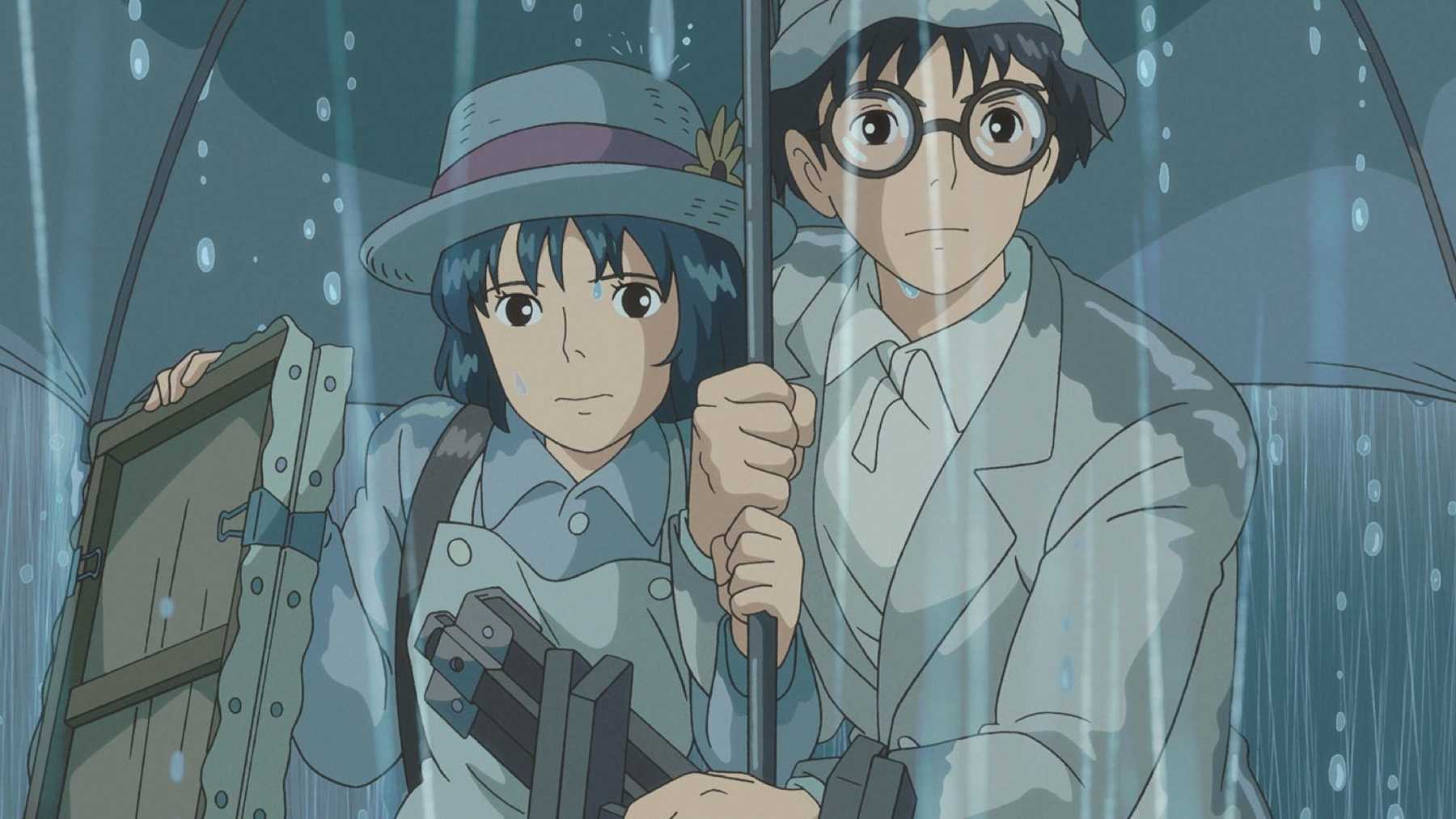By Chlotrudis Independent Film Society
Rating: 4.75 cats
Director: Hayao Miyazaki

Original language title: Kaze tachinu
Country: japan
Year: 2014
Running time: 126
IMDB: http://www.imdb.com/title/tt2013293/combined
Jason says: “When Hayao Miyazaki discussed his work on the film that eventually became THE WIND RISES soon after the Fukushima disaster, he spoke of how his next film would be upsetting as a reaction to that. Now, that film has been revealed to be his last – which is upsetting for a different reason – and while the subject matter is only vaguely connected, he has still made a pointed film on modem concerns. Even though his skill as a storyteller and gentle style disguise it as a historical romance, he leaves the film business on a thoughtful, serious note.
“Initially, THE WIND RISES seems like a simple biography of Jiro Horikoshi, who is introduced as a young boy so plane-crazy in the early years of the twentieth century that he works his way through English-language aviation machines and dreams of meeting legendary aeronautical engineer Caproni. He studies hard, even as his university is damaged in a massive earthquake, and eventually lands a job at Mitsubishi. Most of the projects there are military, although Jiro simply worries about designing fine aircraft. Well, that and Nahoko Satomi, the love of his life whom chance brings back into his life after they had meet on a train years earlier.
“Miyazaki does not shout to make sure the audience gets the message; there is no scene where Jiro is asked to justify building a machine that will be used to kill people. On the other hand, the fact that he is making that deal with the devil is never far in the background. Consider an early sequence, where young Jiro fights off a group of bullies, is admonished by his mother that violence is never a good solution, and give the sort of assent that indicates he’s not going to change at all. At first it looks like a way to show Jiro as a man of decency and principle, and it does, but on reflection it also suggests that he can’t adhere to the hard values. Throughout the entire movie, Jiro never stops to consider whether what he is doing is right, in the grand scheme of things. He is a man made to design planes, and the army needs them.
“The director may not ultimately condone this mindset, but he sympathizes. Love of aviation has been one of the most recurrent themes in Miyazaki’s films, and he does a fantastic job of showing how it can consume Jiro so, whether by showing his quite charming determination to get even the design of a small paper airplane tight, meticulously recreating the aircraft of the period, or providing an exploded view of a small part of a wing to see not just how Jiro views it, but how the intricacy fascinates him. Airplanes are beautiful things to both character and director, and even if the viewer comes away questioning Jiro’s legacy, they will probably come away with a new respect for mechanical engineering.
“The airplanes Miyazaki draws and animates are especially beautiful. One of his underrated talents has always been how he takes mechanical things like airplanes – things that many animators would render digitally even in an otherwise traditionally animated picture – and put them on screen with not only obsessive accuracy but a unique sort of warmth. Other Miyazaki specialties are on display, too: A kid with big, sardonic eyes, non-Japanese characters with details like Caponi’s mustache that are lovingly emphasized and yet no more serve to make them unreal than the way he renders Jiro’s short boss with the funny haircut. Miyazaki has always been the sort of master cartoonist who knows how to use exaggeration to deliver a message, and he similarly always seems to have the proper amount of motion happening at any given time.
“It builds nicely, perfectly moving from a child’s fantasy to an increasingly solid reality interweaving Jiro’s and Nahoko’s love story into what could have been very mundane depictions of study and work, but always making what is going on interesting and giving it a weight that the audience can feel but which never threatens to crush them. There are one or two moments when the story makes a bit of an odd jump, but even when it does, the film tends to earn it with something beautiful. There are moments of great charm and humor sprinkled throughout, occasionally quite striking visuals, and a well-earned sentimentality that seldom overrides the sincere, serious thoughts he wishes to share.
“While Miyazaki never makes any obvious references to the likes of Fukushima, the underlying theme is clear – worrying about being ‘backwards’ or ‘behind’, as the engineers in this film constantly characterize Japan, seldom leads to a good end. It’s nothing he has to state, though; instead, he leads us to a point where this can’t be missed, and because all the details of the route that leads there are so wonderful, we thank him for it, and most likely find THE WIND RISES a finale worthy of the master’s career. 4.75 cats
“Seen 1 March 2014 in Coolidge Corner Theatre #1 (first-run, DCP).”
